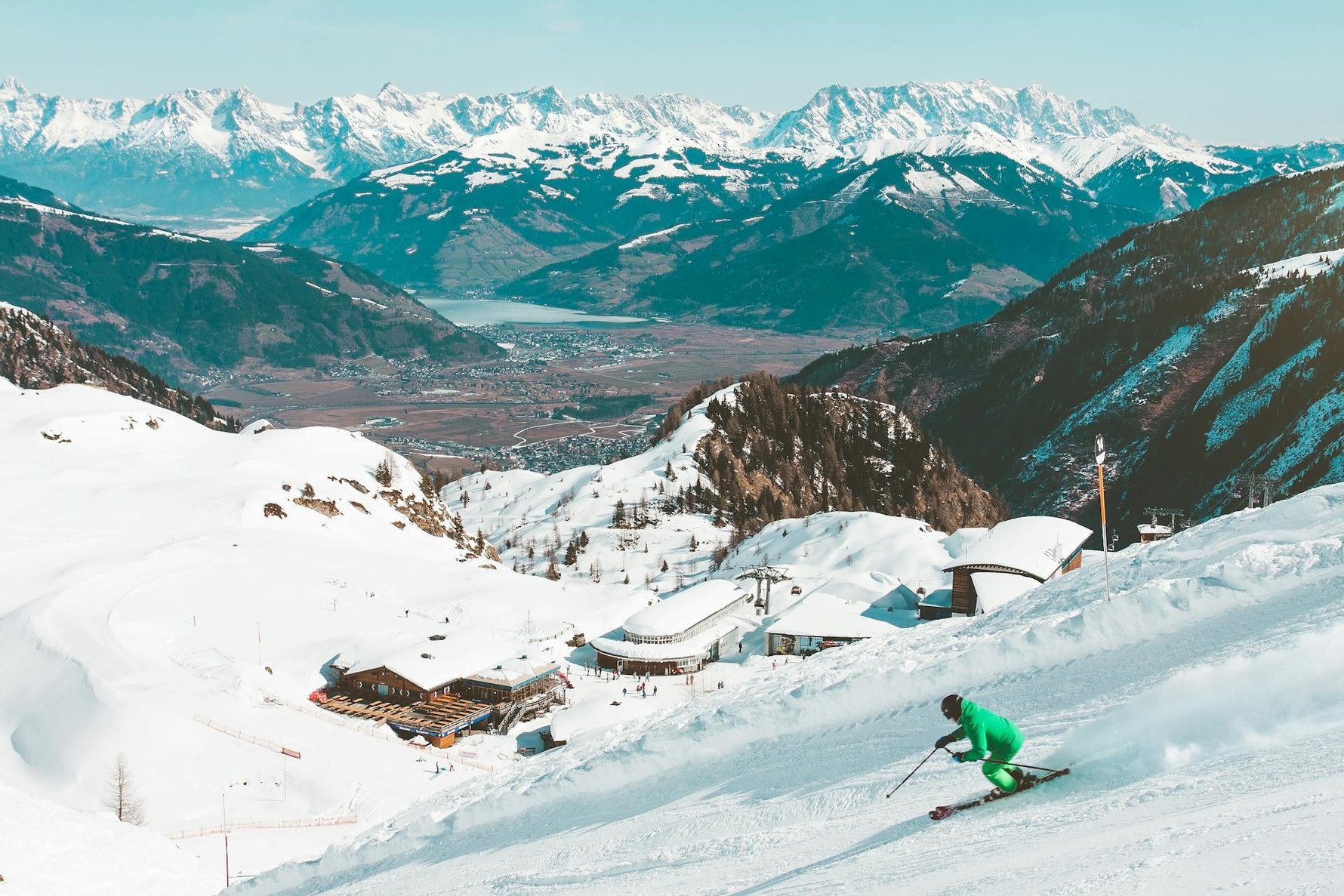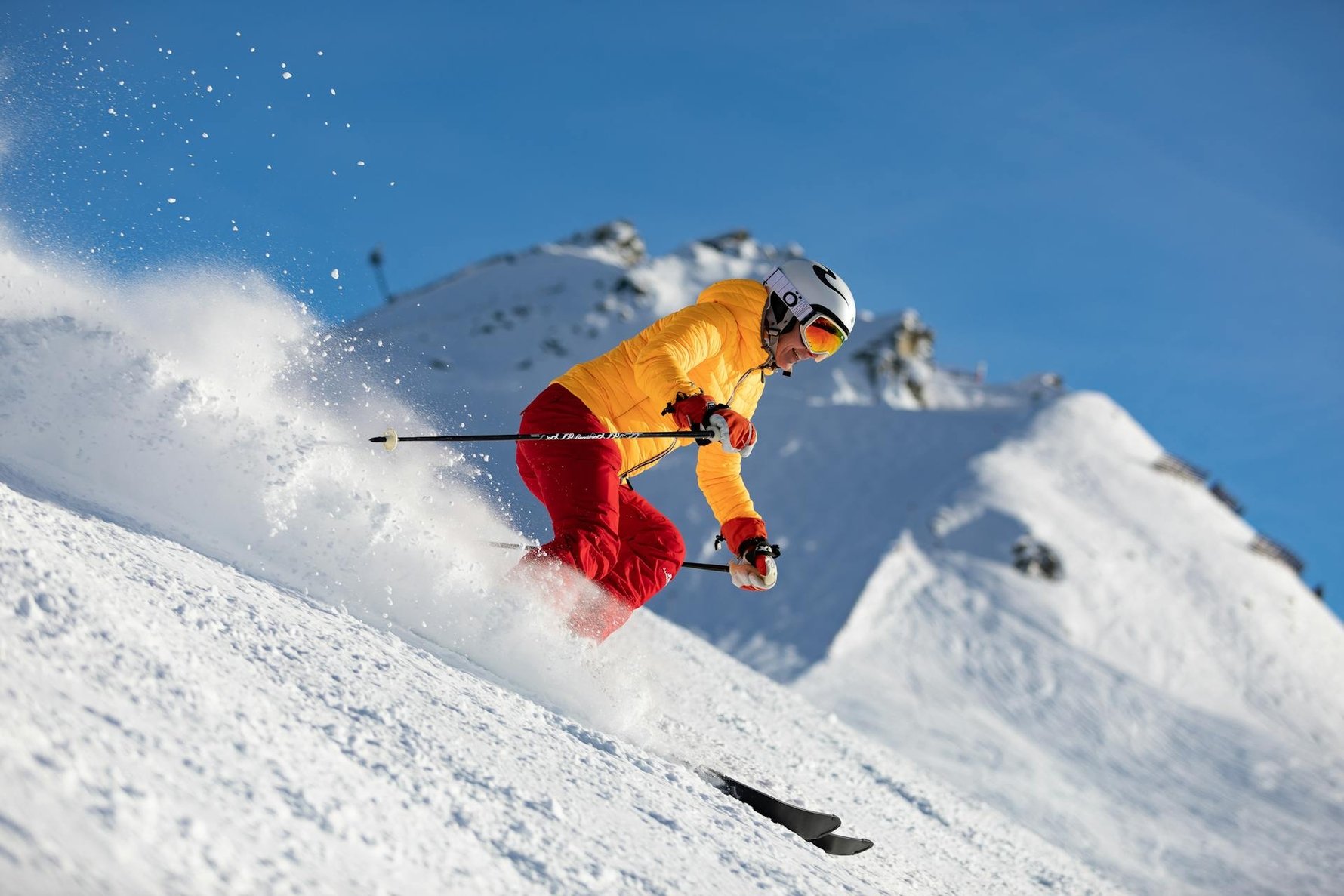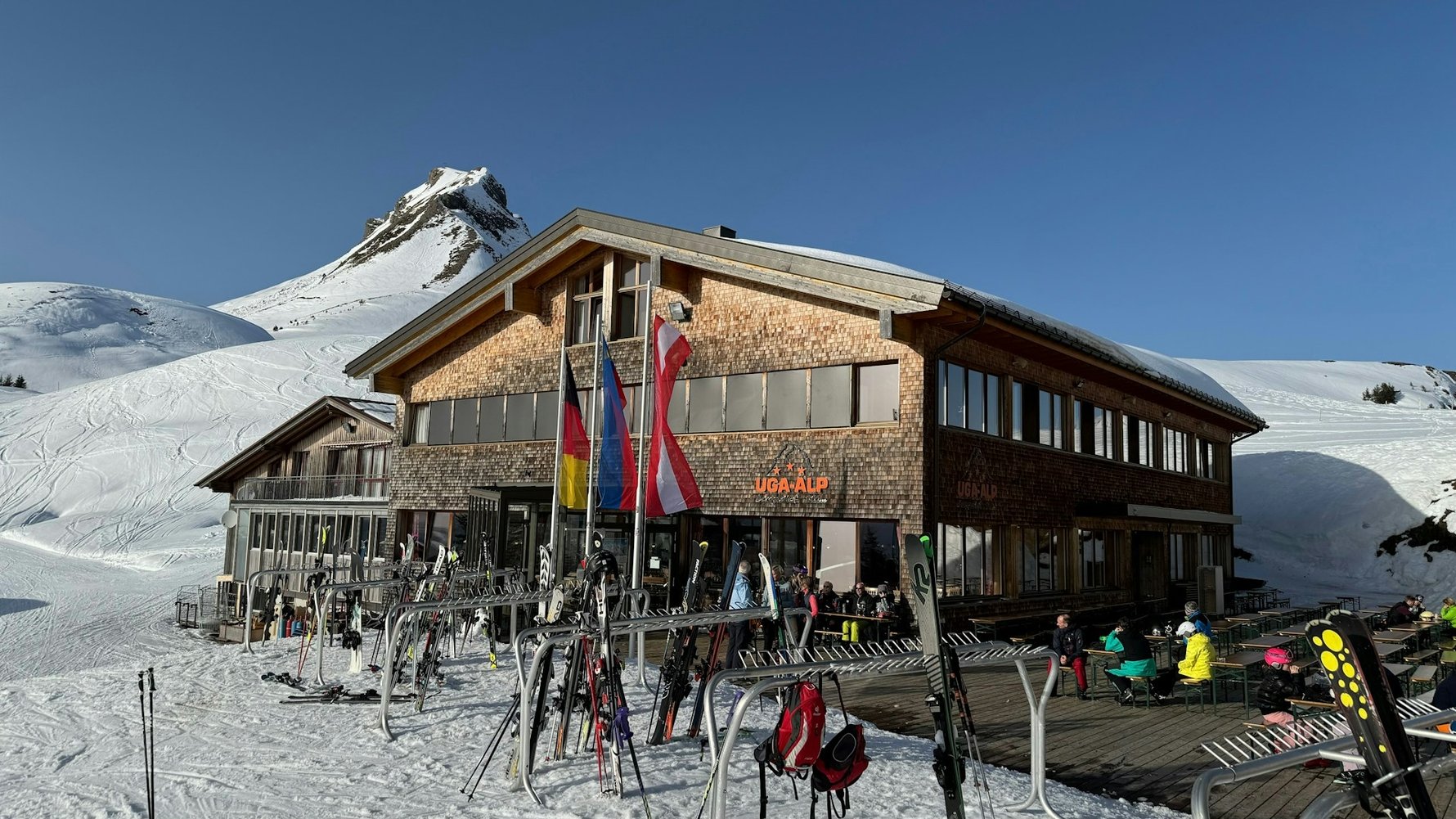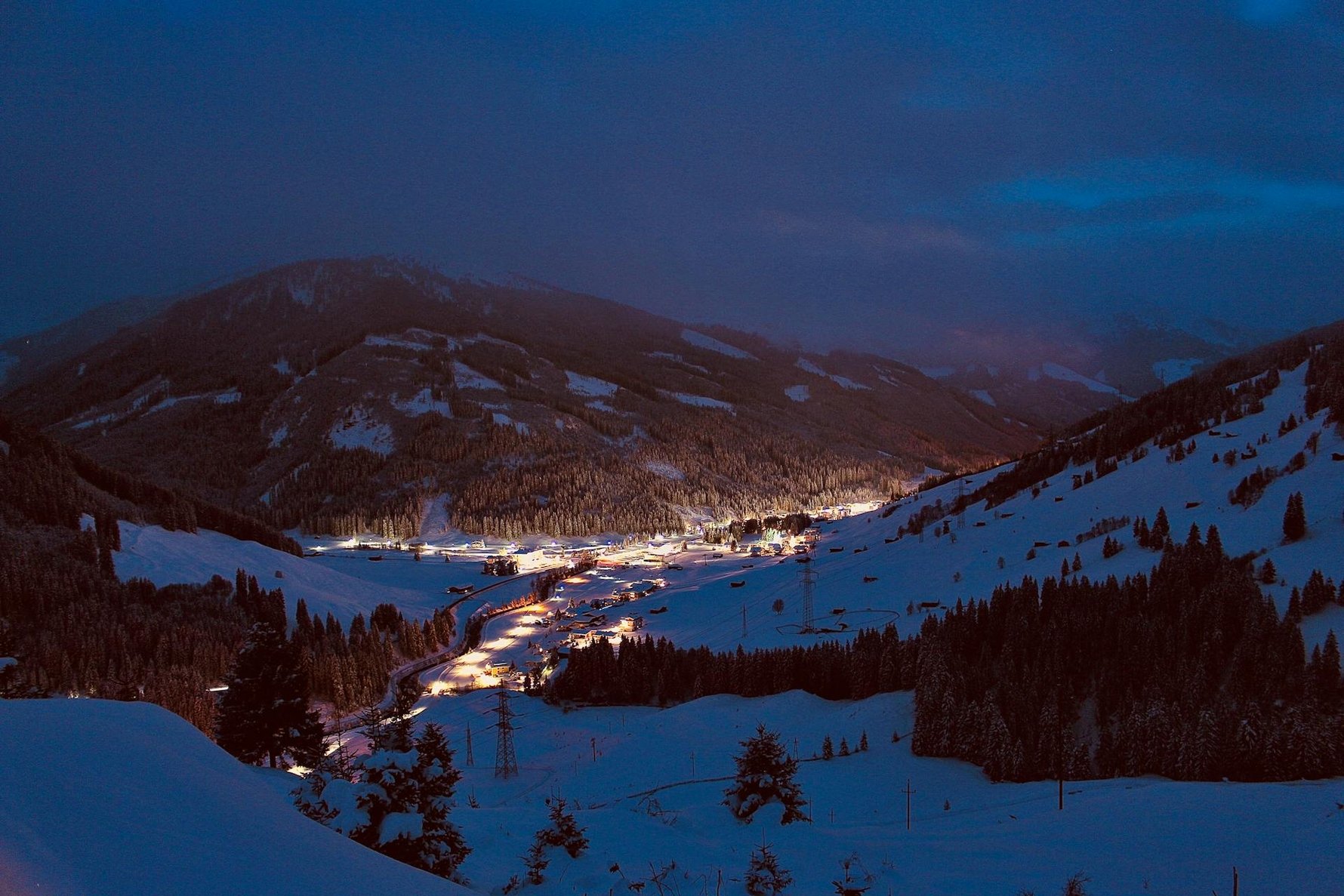
Travel planning: destinations, travel dates, budget and accommodation
The foundation for a successful ski trip is laid long before the first turn on the slopes. Choosing the right destination depends largely on your own preferences: Well-known resorts like Kitzbühel, Ischgl, Sölden, or Saalbach-Hinterglemm offer a huge range of slopes of varying difficulty levels, while smaller resorts offer a more family-friendly atmosphere and often lower prices.
Those just discovering skiing particularly benefit from ski areas with wide, manageable beginner slopes and ski schools with experienced instructors. Travel dates have a significant influence on prices and crowds: School holidays and the Christmas season are peak season, with correspondingly full accommodations and higher costs. Those who are flexible should opt for the off-season. Hotels, guesthouses, and vacation apartments are often significantly cheaper, and the slopes are also emptier.
The budget determines not only accommodation and ski passes, but also the nature of your stay. Complete packages that combine accommodation, meals, and a ski pass are particularly popular with beginners. Booking early also often ensures price advantages, especially for group trips.
Your accommodation selection should be practical: Distances are short near the slopes, while rooms further away are often cheaper. However, you should organize your morning commute to the lifts, for example, by ski bus. Extras such as wellness areas, breakfast buffets, or ski storage round out the offerings and ensure relaxation after an active day. Those looking for additional regional planning tips can consult local travel guides.

Ski equipment: Buying vs. renting and important features
The right ski equipment contributes significantly to safety and enjoyment. Further equipment tips can be particularly valuable for beginners. But the question quickly arises: Is it worth buying your own skis and boots for beginners, or is renting the better option?
For your first ski trip, renting locally is often recommended. Ski shops offer modern, well-maintained equipment that can be individually adjusted to your height, skiing style, and experience level. The advantage: If you're not sure whether skiing will be your long-term passion, this is a flexible and hassle-free investment. Furthermore, there's no need to worry about transporting your own equipment. Winter sports enthusiasts can also conveniently use the Alpy.com ski hire in Zell am See.
Whether you buy or rent, it's important to pay attention to quality and fit. Ski boots should fit snugly but not pinch anywhere. They are the most important link between you and your skis. A well-adjusted helmet is a must, especially on crowded slopes or in changeable weather. Beginning skiers are best advised to choose all-round carving skis or specialized beginner skis with easy turn initiation and stable control. Ski poles and warm, breathable clothing are also essential. Gloves, ski goggles with UV protection, and a functional back protector complete the equipment.
Many sports shops offer convenient all-inclusive packages, including insurance against breakage and theft, in addition to swapping gear during your vacation. Finding the right equipment lays the foundation for a safe and comfortable skiing adventure.

Variety of slopes: selection, safety and behavior on the slopes
Austria's ski resorts are known for their diversity. But how do you find the right slopes for your first adventure on two boards? Beginners, in particular, should look for slopes with clear signage and gentle gradients. In most areas, the slopes are classified by difficulty: blue for beginners, red for intermediates, and black for absolute experts. Choosing the "blue" slopes makes getting started much more enjoyable and promotes learning success.
Safety on the slopes always comes first. Proper behavior is not only important out of consideration for other winter sports enthusiasts, but is also regularly monitored. The FIS rules provide guidance for everyday life on the slopes and are especially essential for beginners: Consideration, being ready to brake before sections with poor visibility, and observing stops when off-track prevent accidents.
In poor visibility, busy conditions, or after fresh snowfall, it is recommended to adopt a particularly defensive skiing style. If you're unsure, the local ski schools not only offer lessons but also provide everything you need to know about piste tips, equipment knowledge, and route selection. If you're unexpectedly faced with a steep descent, it's best to ski carefully along the edge or use chairlifts and gondolas to access suitable runs.
Especially important: Always pay attention to your own ability level, take breaks in good time, and listen to your body's signals.

Ski pass and regional offers: prices, discounts and special features
Without a valid ski pass, nothing can be done on the Austrian slopes. However, the pricing models are varied, and with a little planning, you can save significantly. In almost every ski area, guests can get day, multi-day, or weekly passes that allow unlimited skiing on the open slopes. For beginners or those returning to skiing, special beginner passes or part-time tickets that are only valid for certain lifts or periods are often worthwhile.
Many regions offer discounted rates for families, groups, and children. It's worth comparing prices. Those who book early can benefit from online discounts. Last-minute offers or combination tickets that include access to saunas, leisure centers, or ski bus rides, for example, are also particularly popular.
Some resorts issue so-called guest cards, which not only reduce lift prices but also offer discounts on off-piste activities. Those who are flexible can rely on dynamic pricing models: Prices often drop on quieter days, while weekends and peak travel times are significantly more expensive.
Additionally, boarding early or late in the day offers opportunities to save money, for example, with half-day tickets. It's therefore important to realistically assess your own needs and riding ability and choose the right option based on that.

Après-ski and leisure: party tips and cultural highlights
The appeal of a ski trip to Austria doesn't end on the slopes, as the diverse après-ski offerings are legendary. Typical are rustic ski huts or bars right on the slopes, which create a lively atmosphere from the afternoon onwards with music, dancing, and regional specialties. Helpful nightlife tips offer the opportunity to discover the best locations and evenings in the ski resorts. Those in the mood for partying will quickly find what they're looking for in trendy locations like St. Anton, Sölden, or Saalbach. Toasting with like-minded people is simply part of the experience.
But not everyone is looking for a pure party experience: Austrian ski resorts also have a lot to offer culturally. Many regions maintain traditions such as mountain hut magic with live music, torchlit hikes, Christmas markets, or culinary events featuring local delicacies. Those who appreciate art and history can visit museums, historic town centers, or regional festivals. These are often even within walking distance.
Families will find numerous alternatives to classic après-ski: toboggan runs, ice skating rinks, and thermal baths offer a relaxing alternative. Wellness enthusiasts will find modern spas and sauna complexes in many locations. Active sports enthusiasts can try snowshoe hikes, cross-country skiing, or winter hiking trails.
It's all in the mix: those seeking a mix of partying and relaxation will find just as much to their liking as vacationers seeking an authentic winter atmosphere away from the hustle and bustle.
Avoid mistakes: Do’s, don’ts and insider tips for your ski holiday
What are some common mistakes to avoid on your first ski trip to Austria? A common stumbling block is overestimating your own abilities. It's better to start with easy slopes and gradually increase your ambition. If you push yourself too hard too quickly, you risk not only frustration but also injury.Another mistake: skimping on equipment or ski lessons. Expert instruction from experienced instructors not only ensures more fun but also effectively prevents injuries. It's advisable to plan sufficient breaks and wear weatherproof, layered clothing. Cold hands, wet feet, or fog on your goggles can quickly ruin a day of skiing.
Insider tips for beginners: A hearty breakfast is a must in the morning to maintain energy until the afternoon. Being open to tips from locals pays off: Ski instructors, innkeepers, or hosts often have the best restaurant recommendations, hidden beginner slopes, and insider tips for less-traveled trails.
What should definitely not happen: Reckless behavior or disregard for FIS rules. Mutual respect and helpfulness on the slopes are essential and create a harmonious atmosphere.
One last tip: Enjoy the anticipation, but stay flexible. Weather and snow conditions can change spontaneously. By staying calm and resorting to alternatives, you can maintain a pure holiday spirit and turn every ski trip into a true winter highlight.
Conclusion: Perfectly prepared for your first ski holiday in Austria
With good preparation, suitable equipment, an open mind for what the region has to offer, and a healthy dose of respect for snow and fellow people, your first ski trip to Austria will be a thoroughly enjoyable experience. Winter sports, the joys of nature, and convivial moments await you. In the end, it's the memories of unforgettable days in the snow that count.


Comments